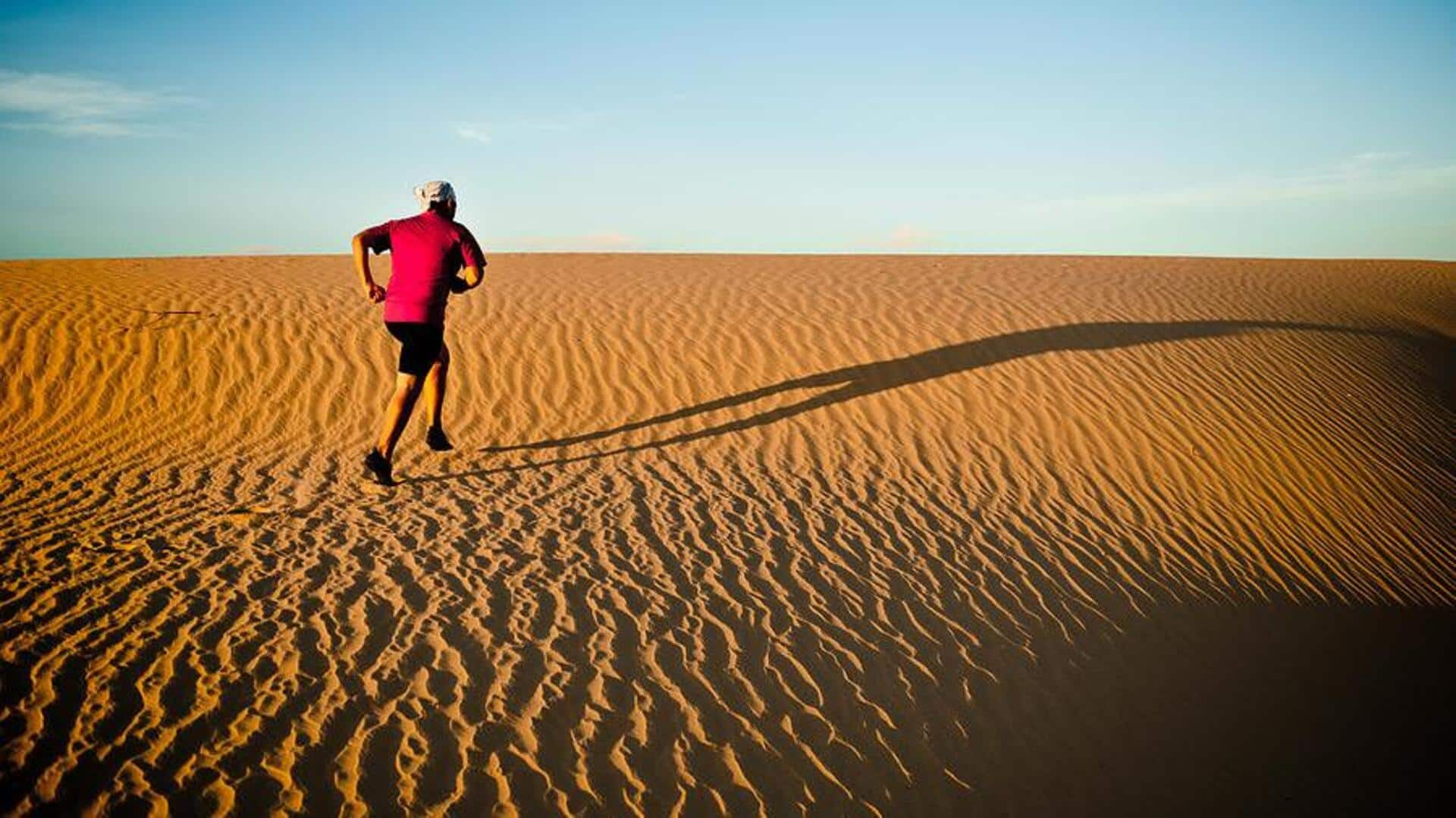
Running the deserts: A beginner's guide to desert marathons
What's the story
Ultra-marathon deserts are grueling endurance races held in the world's most inhospitable and unforgiving landscapes. These events push the boundaries of human endurance, mental fortitude, and sheer willpower. Runners from across the world converge to compete in races exceeding 100 miles through blistering deserts, battling brutal conditions and searing heat.
Preparation
Preparing for the challenge
Training for an ultra-marathon desert race is an extremely demanding endeavor that necessitates months of dedicated preparation. Runners need to condition their bodies to endure grueling distances under the intense heat of the sun. This means regular long-distance running, strength training for endurance, and even heat acclimatization sessions in heat chambers or saunas to mimic the harsh desert environment. Additionally, formulating effective hydration and nutrition strategies is crucial.
Navigation
Navigating through extremes
One of the most daunting aspects of desert ultra-marathons is finding your way across the immense, often featureless, landscapes. Runners need to be skilled navigators, equipped with GPS units, compasses, and the detailed maps supplied by race organizers. Mastering these tools is crucial - a wrong turn can lead to hours lost wandering among shifting sands.
Gear
Essential gear for desert racing
The right equipment is crucial for survival and success in desert races. Lightweight, breathable clothing protects runners from the sun while facilitating efficient sweat evaporation. Specially designed trail running shoes for sand provide enhanced traction and support. Runners equip themselves with hydration packs that can hold several liters of water, UV protection sunglasses, and broad-brimmed hats to shield from the sun's unrelenting exposure.
Hazards
Coping with desert hazards
Desert environments are inherently hostile, with extreme temperature fluctuations, dangerous wildlife encounters (think snakes and scorpions), and sudden sandstorms that can reduce visibility to practically zero in an instant. Runners need to be mentally and physically tough, keep a close eye on the weather, know what to do if they get bitten or stung (first aid is a must), and always wear their protective gear.
Hydration
Staying hydrated: The key to survival
Hydration is key in desert ultra-marathons. Intense heat = crazy-fast fluid loss. You gotta keep refilling the tank or you'll hit dehydration station, and that's a one-way ticket to serious health problems or worse. Runners lug around water bottles or hydration bladders filled with electrolyte solutions. This way, they keep the salt balance in check and their thirst at bay.